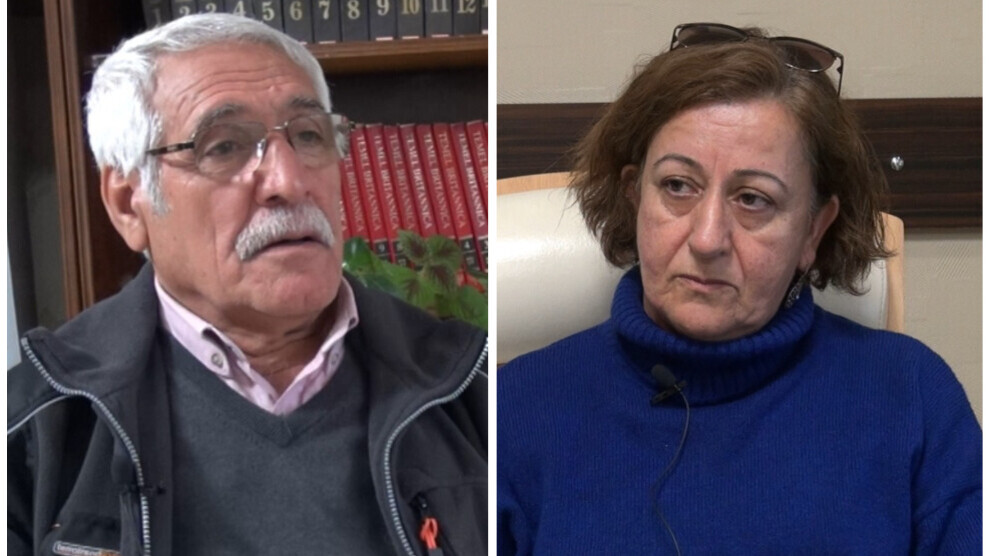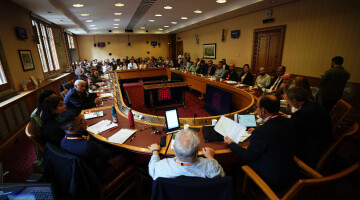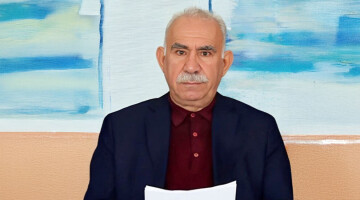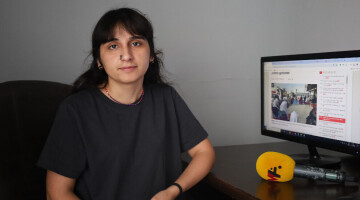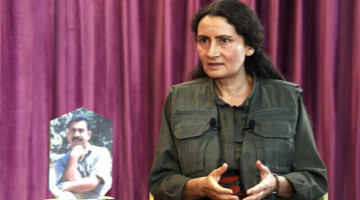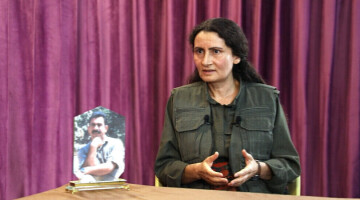The Diyarbakir No. 5 Prison, where tens of thousands of people were tortured following the 12 September 1980 military coup, was among the 10 worst prisons in the world. It was completely emptied after Turkish President Recep Tayyip Erdogan had announced that it should be turned into a cultural centre. Hüseyin Barış, Co-Chair of the Amed Branch of the 78s Association and Selma Aslan, Co-Chair of the Amed Chamber of Architects talked about the issue and said that the prison should be turned into a museum of shame.
The notorious Diyarbakir No. 5 Prison, built in 1980 after the military coup to put thousands of political activists into prison, takes a serious place in the memory of Kurdish society. This prison, where various kinds of torture were practiced, witnessed great resistance including death fasts, and the leaders of the Kurdistan Freedom Movement stayed, has been completely emptied in recent years. Turkish President Erdogan said that his government would turn it into a cultural centre. The Kurds consider the prison as a stronghold of resistance.
Hüseyin Barış, and Selma Aslan made evaluations about the history of the prison and why it should be preserved.
Hüseyin Barış said that when he was detained in 1980, he was subjected to various tortures for 2 months and that these tortures continued even after he was brought to the Diyarbakir No. 5 prison. Barış noted that even though there was nothing in his file to keep him in prison, he was kept in the Diyarbakir No. 5 prison for 10 years.
MUSEUM OF SHAME FOR HUMANITY
Barış stressed that what happened in the prison is not something to be forgotten. Barış continued: “They devastated us and our families. Not only me, 50 thousand people were subjected to this persecution. I believe that the Diyarbakir prison is in the top 5 worst prisons. The war crimes committed by the Nazis during the Second World War are currently exhibited in a museum of shame. Therefore, the Diyarbakir prison should certainly be considered as a museum. It should never be turned into a cultural centre or something similar. It should become a place of shame not only for the Kurds, but for all humanity.”
MEMORY SPACES ARE VERY IMPORTANT
Selma Aslan said that the Diyarbakir No. 5 prison was notorious for Amed residents, adding that what the individual experiences in a space over time is related to the formation of that space. Aslan stated that prisons are among the places where social memory is formed. She remarked: “There are situations where you plan the future based on your memory of the past. Therefore, memory spaces are very important. It is very important for society to preserve that collective memory and carry it to future generations. The construction of the Diyarbakır Prison was completed in 1980 and, after the September 12 military coup, it started to be used as a military prison. It became a prison where many people were tortured and killed over the years.”
MEMORY IS NOT PRESERVED IN TURKEY
Aslan reminded that the conversion of the Diyarbakir Prison into a museum has been on the agenda for a long time. Aslan said: “The prison was suddenly completely emptied overnight before a visit of President Erdogan to Diyarbakir and the Ministry of Justice transferred its ownership to the Ministry of Culture and Tourism. Governments and establishments in Turkey tend to destroy memory instead of preserving it. There are many concerns about the prison. If you are going to make it a museum, you must first research what the people living in this city feel and think. While the existence of the Kurdish people is still being discussed or Turkish society is shaped through this single nation project, what kind of a structure are you planning, considering the reasons why prisoners were put there and its consequences?
HAPPINESS CANNOT BE BUILT ON PAIN
Aslan underlined that any decision over the Diyarbakır Prison should not only concern the government or its institutions. She said: “Of course, it should turn into a museum that calls what was experienced to account. What kind of traumas did the people who stayed there at that time experience? Therefore, there should be a memory space that needs to be designed together with them. There should be no work to erase experiences or incidents that have a place in the memory of society. It should be transformed into a place where past experiences are preserved, where everyone can see what happened in the prison. This may lead to a re-examination of past events. For example, a former guard should confront his maltreatment of prisoners when he goes to see the museum. Moreover, when a relative of a person who was tortured in that prison goes to visit it, she/he should be able to feel the suffering of those who stayed there. It is necessary not to create spaces that will make one forget what happened. Happiness cannot be built on the pains of others”.

